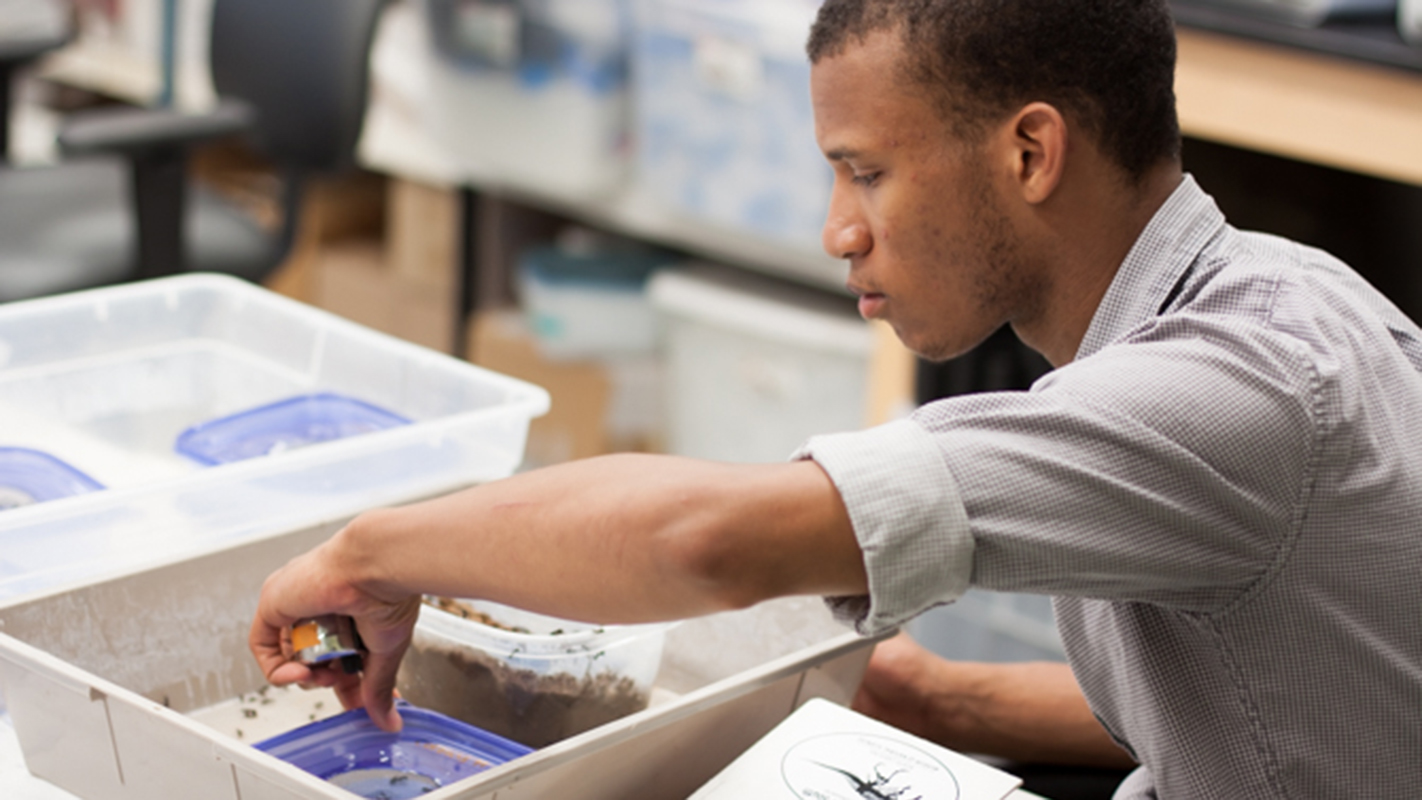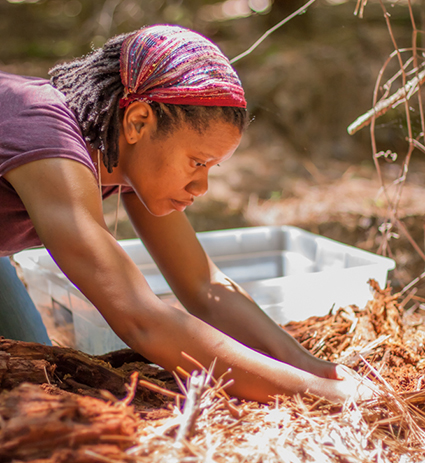The Ecology of the Future and the Future of Ecology

Editor’s Note: a version of this feature first appeared on NSF.gov.
Biologists in North Carolina are trying to get a glimpse of the future through a project designed to shed light on how rising temperatures will affect the insects and microbial life that play critical roles in the environment. But the researchers are also hoping to shape the future, working with college students from underrepresented groups and designing citizen science tools to give middle school students everywhere the chance to be involved in scientific discovery.
The research revolves around a patch of forest in North Carolina. Scattered among the trees are a dozen rooms with neither roofs nor floors. Ringed with plastic ductwork that pumps warm air, these “warming chambers” allow the researchers to manipulate the temperature of small sections of forest. And for the past five years, with support from NSF’s Dimensions of Biodiversity program, researchers have been studying those patches of forest to see how life has responded to slight increases in temperature.
The goal of the study was to get insights into how forest ecosystems will change as a result of global climate change. And in 2014, the researchers took on a new goal: to help shape the future of ecology research itself.
Rob Dunn, a professor at NC State University and primary investigator on the project, worked with two postdoctoral researchers in his lab to get a Research Experiences for Undergraduates (REU) grant from NSF. NC State undergraduates were already involved in the warming chambers research project, but the REU was designed to be a collaboration between NC State and Shaw University – a historically black university in Raleigh, N.C. – for the express purpose of engaging African-American undergrads in ecological research.

The funding, which supplemented the original biodiversity grant, allowed the NC State research team to support two Shaw undergraduates to do fieldwork on the warming chambers project during the summer of 2014.
The REU focused on a specific research question: what impact do warming temperatures have on ant immune function? The goal was to determine how insect-disease interactions may change as a result of climate change.
“We found that behavioral aspects of immunity in ants did change in warmer environments,” says Mary Jane Epps, one of the postdoctoral researchers in Dunn’s lab who collaborated on the REU. “For example, we found that ants spent more time grooming themselves and each other at higher temperatures. There are two papers coming out of that 2014 REU, and each of the students will be a co-author on one of them.”
But the results of that REU extend beyond the scientific findings.
“One of the reasons I pursued this REU is because African Americans are not well represented in the field of ecology – which is ironic, since it’s a field that studies diversity,” says DeAnna Beasley, another of the Dunn’s postdocs who collaborated on the REU.
“Many students have a very narrow view of what science is; they think it’s something you only do in a laboratory,” Beasley says. “We were able to expose these students to wildlife ecology, and now one of them is considering graduate studies in ecology – based on his experiences with us and with Eric Butler, his mentor at Shaw.”
The project was so successful that Dunn, Beasley and Epps were awarded a new REU for 2015, this time focusing on how insect pathogens respond to warmer temperatures. Specifically, the researchers are evaluating soil samples from the warming chambers to determine the presence and prevalence of fungal pathogens that attack insects and how that prevalence changes based on environmental temperatures.
“One Shaw student from 2014 returned this summer, and we’re working with a new Shaw student as well,” Epps says. The researchers also plan to extend the REU project into the fall semester so that another Shaw student can be involved.
“It’s important to note that these projects are not only about giving students from underrepresented groups a chance to get hands-on experience, or to get them excited about science,” Epps says. “These projects are also about addressing significant questions about our environment.”
“And we expect to get another paper out of this summer’s work,” Beasley says.
In addition, Beasley, Dunn and the Shaw students will be working with three middle school teachers who are part of NC State’s Kenan Fellows Program to use the insect pathogens project as the basis for new teaching tools.
The teachers are working with Beasley and the Shaw students in field and lab research looking at ant immunity and insect pathogens at both urban and forest sites. Based on this experience, the teachers will develop a project-based science lesson plan to engage middle school students in authentic scientific research.
“We’ll work together throughout the school year to refine the curriculum and next summer the teachers will teach the new lesson plan to 40 teachers at a professional development workshop hosted by NC State’s Friday Institute for Educational Innovation,” Beasley says.
This work, which is funded by a grant from NSF’s Division of Research on Learning, will allow middle school teachers and students anywhere in the country (or abroad) to collect and analyze soil samples for pathogens that harm insects. Ultimately, the goal is for those middle school classrooms to plug their findings into a national database that can track the diversity of pathogens in different environments.
“This project is not only creating opportunities for the undergrads at Shaw, but giving middle school students everywhere the chance to be part of a meaningful scientific inquiry,” Beasley says. “We’re talking about contributing to our understanding of the world around us, and hopefully inspiring future scientists while we’re at it.”
- Categories:


